
Tilted orbits might make some planets wobble like a top that’s almost done spinning, an effect that could maintain liquid water on the surface. Credit: NASA’s Goddard Space Flight Center
New research from astrobiologists at NASA’s Goddard Space Flight Center reveals that large amplitude, high frequency obliquity oscillations on Earth-like exoplanets can suppress the ice-albedo feedback, increasing the outer edge of the habitable zone.
Pivoting planets that lean one way and then change orientation within a short geological time period might be surprisingly habitable, according to new modeling by NASA and university scientists affiliated with the NASA Astrobiology Institute.
The climate effects generated on these wobbling worlds could prevent them from turning into glacier-covered ice lockers, even if those planets are somewhat far from their stars. And with some water remaining liquid on the surface long-term, such planets could maintain favorable conditions for life.
“Planets like these are far enough from their stars that it would be easy to write them off as frozen, and poor targets for exploration, but in fact, they might be well-suited to supporting life,” said Shawn Domagal-Goldman, an astrobiologist at NASA’s Goddard Space Flight Center in Greenbelt, Maryland. “This could expand our idea of what a habitable planet looks like and where habitable planets might be found.”
The new modeling considers planets that have the same mass as Earth, orbit a sun-like star, and have one or two gas giants orbiting nearby. In some cases, gravitational pulls from those massive planets could change the orientation of the terrestrial world’s axis of rotation within tens to hundreds of thousands of years – a blink of an eye in geologic terms.
Though it might seem far-fetched for a world to experience such see-sawing action, scientists have already spotted an arrangement of planets where this could happen, in orbit around the star Upsilon Andromedae. There, the orbits of two enormous planets were found to be inclined at an angle of 30 degrees relative to each other. (One planet was, as usual, farther from the star than the other planet.)
Compared to our solar system, that arrangement looks extreme. The orbits of Earth and its seven neighboring planets differ by 7 degrees at most. Even the tilted orbit of the dwarf planet Pluto, which really stands out, is offset by a relatively modest 17 degrees.
“Knowing that this kind of planetary system existed raised the question of whether a world could be habitable under such conditions,” said Rory Barnes, a scientist at the University of Washington in Seattle who was part of the team that studied the orbits of the two Andromedae planets.
The habitability concept is explored in a paper published in the April 2014 issue of Astrobiology. John Armstrong of Weber State University in Ogden, Utah, led the team, which includes Barnes, Domagal-Goldman, and other colleagues.
The team ran thousands of simulations for planets in 17 varieties of simplified planetary systems. The models the researchers built allowed them to adjust the tilt of the planetary orbits, the lean in the axes of rotation, and the ability of the terrestrial planet’s atmosphere to let in light.
In some cases, tilted orbits can cause a planet to wobble like a top that’s almost done spinning – and that wobbling should have a big impact on the planet’s glaciers and climate. Earth’s history indicates that the amount of sunlight glaciers receive strongly affects how much they grow and melt. Extreme wobbling, like that seen in some models in this study, would cause the poles to point directly at the sun from time to time, melting the glaciers. As a result, some planets would be able to maintain liquid water on the surface despite being located nearly twice as far from their stars as Earth is from the sun.
“In those cases, the habitable zone could be extended much farther from the star than we normally expect,” said Armstrong, the lead author of the paper. “Rather than working against habitability, the rapid changes in the orientation of the planet could turn out be a real boon sometimes.”
Reference: “Effects of Extreme Obliquity Variations on the Habitability of Exoplanets” by J. C. Armstrong, R. Barnes, S. Domagal-Goldman, J. Breiner, T. R. Quinn and V. S. Meadows, 15 April 2014, Astrobiology.
DOI: 10.1089/ast.2013.1129
arXiv: 1404.3686

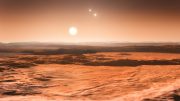
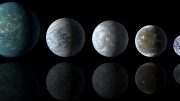
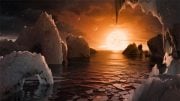

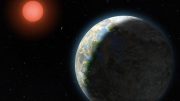
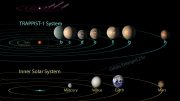
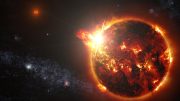
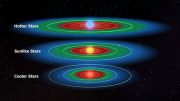
Why not make Mars into a habitable planet. Bring in a few comets and bombard it into life. Need it closer to the Sun, is possible by fluctuating the magnetic field of the planet.
Yeah, sure.
How do you suppose one fluctuates a planet’s magnetic field?
Not that this would have any effect.
And not that Mars had much of a magnetic field to play with….
“Titled”?
Typo…”Tilted”
Better.
Thanks…sorry we missed that.
The case of the tilting orbits of planets are mostly general in any star systems, like our solar systems. We should consider the origin of planets’ generation. It is most likely that all the planets surrounding a star will never come from the central star breaking off. The nebulous cloud formation will lead to star formation and near failed stars formation and naturally a dust ring of stones and ice around a star. Thus the planets surrounding any star will be supposed to be dragged by the star by its gravity, which will result in several orbits with tilting spin of planets around them. The case of the locked spin without any tilt can happen only with the nearest planet to a star, since it will be gravitationally locked by the star. that is how our distant Pluto has got a tilt of 17 degrees maximum. Moreover as the star ages in astronomical sense, the orbits will be compressed to a plane more or less like our solar system. In the young stars where planets are forming, the nebulous cloud around them which finally results in a cometary cloud will almost be spherical to start with and the planets’ spin orientation will be vast even more than 30 degrees. Thus it seems to be a natural selection of evolution cosmologically to tilt the planets around any star, thus paving way for another future cosmological importance occurance of beginning phase of living beings. After all the phase of life of living beings in any planet will be a small fraction of its life time. The living beings start flourishing one by one in any planet as a small phase in planetary chemistry going to biology for a short while. Anyway, I firmly believe that simultaneous intersection of two intelligent living persons in different planets are very rare, since the phase of their existence is very small compared to inorganic phase and there will be no UFO’s encounter at all which can be read by my articles under “Science Frontiers- A Probe by Madan” through internet. Thank YOu.